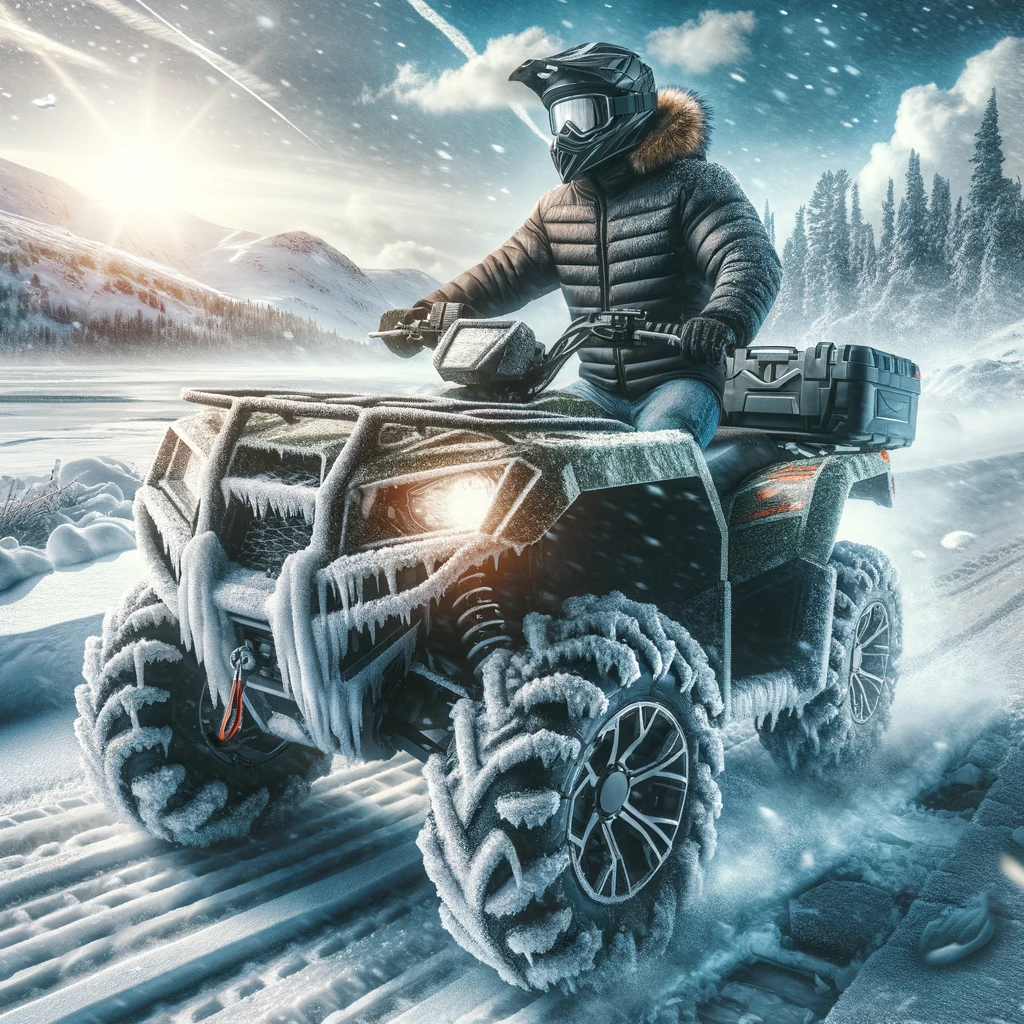
Riding ATVs (All-Terrain Vehicles) in snowy or icy conditions requires a unique approach compared to riding in normal conditions. This is primarily due to the reduced traction, visibility, and increased risk of hypothermia associated with cold weather.
Understanding the Challenges of Snowy and Icy Conditions
When riding an ATV in snow or ice, the most significant challenge is traction. Snow and ice can make surfaces slippery, increasing the risk of skidding or losing control. Furthermore, cold weather can impact the ATV’s mechanical performance, including the battery life, tire pressure, and fluid viscosity.
Key Considerations for Safe ATV Riding in Winter
- Tire Selection and Pressure: It’s essential to equip your ATV with tires suited for snow and ice. Some riders prefer using tire chains for added traction. Also, tire pressure should be adjusted according to the manufacturer’s recommendations for cold weather.
- Reduced Speed and Controlled Maneuvers: Speed control is crucial. The slick nature of ice and snow demands a slower, more deliberate riding style. Quick turns or abrupt stops can lead to loss of control.
- Visibility and Lighting: Snowfall and fog can drastically reduce visibility. It’s important to ensure that your ATV’s lights are functioning correctly and to wear reflective gear.
- Rider’s Gear: Dressing appropriately is key to managing the cold. Layers of thermal clothing, a waterproof outer layer, gloves, and a helmet with a face shield are essential to protect against hypothermia and frostbite.
- Regular Maintenance: Cold weather can affect the ATV’s battery and fluids. Regular checks and maintenance are vital to ensure that the ATV remains in good working condition.
- Riding Technique Adjustments: Riders should practice gentle throttle and brake application to prevent skidding. It’s also wise to lean into turns to help maintain balance.
- Emergency Preparedness: Carrying a survival kit with essentials such as a first aid kit, a flashlight, a thermal blanket, and some food and water is always a good practice.
Personal Experience and Anecdotes
During my own winter ATV excursions, I’ve learned the importance of being prepared for any situation. On one occasion, I encountered an unexpected snowstorm, which drastically reduced my visibility. Thankfully, my preparation with proper lighting and reflective gear helped me navigate safely back.
Riding an ATV in snow and ice can be an exhilarating experience, but it demands respect for the unique challenges posed by these conditions. Proper preparation, equipment, and riding techniques are essential for a safe and enjoyable ride. Remember, the unpredictability of winter weather means that every ride can be different, so stay alert and prepared.
Incorporating these tips into your winter ATV riding routine can significantly enhance your safety and enjoyment. Stay warm, stay visible, and most importantly, stay safe!

